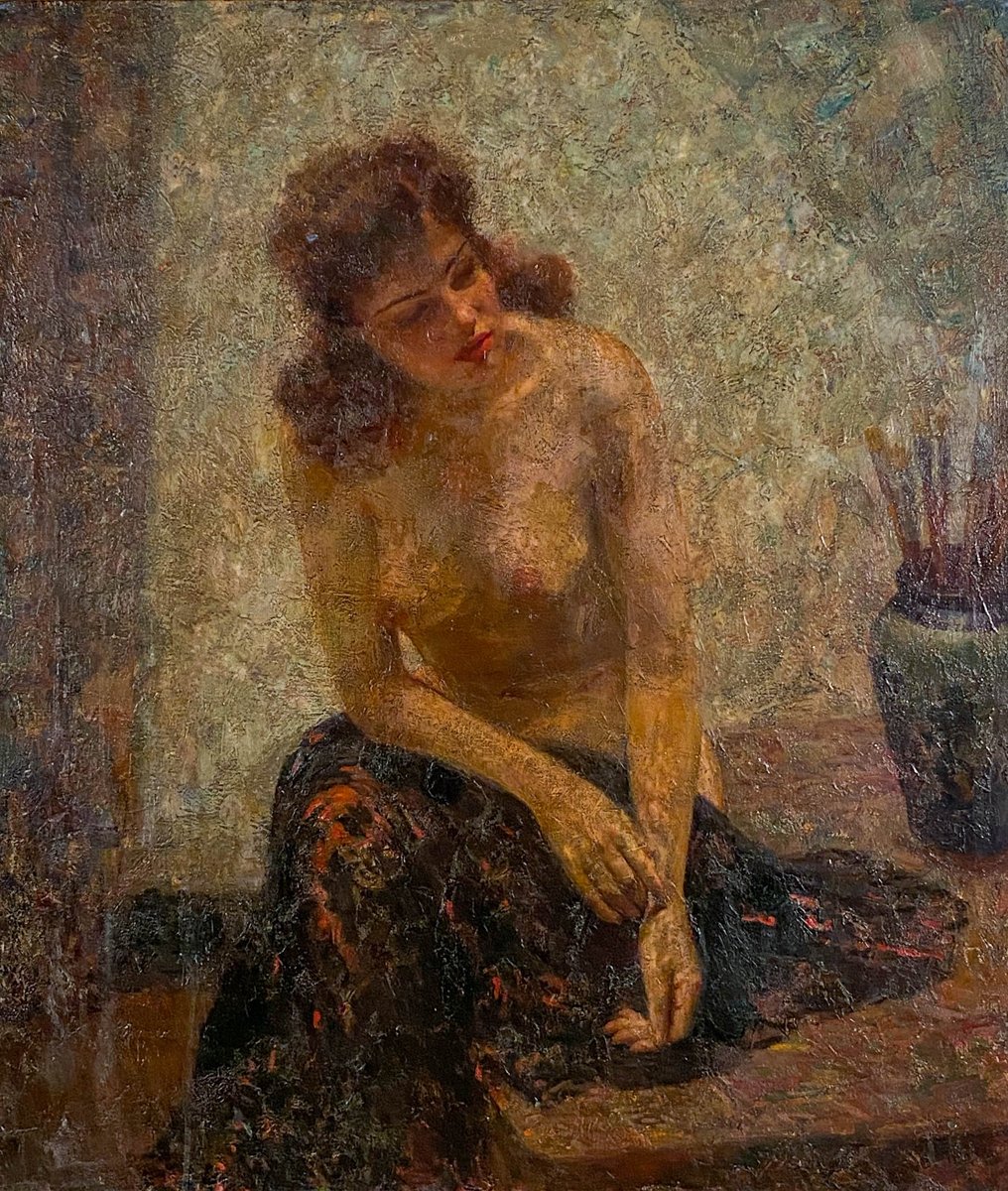Paintings
Jean Gabriel Domergue
French, 1889-1962Le Model
Oil on canvas36 ¼ by 42 in. W/frame 44 ¼ by 50 in.
Lower right; Circa 1914
Provenance:
Private Collection Boston Ma.
Le Trianon Fine Art & Antiques
See Artist Bio below.
Jean Gabriel Domergue
French, 1889-1962Born in 1889 at the height of the French Belle Epoque- the golden age of art, technology and commercial prosperity, Domergue was greatly influenced by all the splendors the period produced. Paris was its epicenter. With its galleries, cafes and grand boulevards lined with impressive shops brimming with fashionable accessories in their window fronts, it was a veritable spectacle to be had, one that gave rise to the term flaneur/boulevardier- the urban explorer, who voyeuristically seeks artistic inspiration from people watching, from perusing the streets and relishing in the abundant vagaries, follies and fashions they engender, particularly the “ladies of the evening”. Often referred to as “grand courtesans”, “demi-mondaines” or “coquettes”, these attractive women were born of meager origins. Instead of becoming maids or washwomen, they sought vocations in the performing arts as actresses, singers, ballerinas and dancers, achieving fame and status in society (much like Marilyn Monroe) through wealthy art patrons. Emile Zola, Edouard Manet, Edgar Degas and Henri de Toulouse-Lautrec immortalized this archetype in their depictions of Nana and of the dancers at the Folies-Bergeres and Moulin Rouge, which left a lasting impression on the young Domergue.
Following his studies at Ecole Nationale Superieure des Beaux-Arts where he won the second Prize of Rome in 1913, Domergue honed his artistic eye on “ladies of the evening”, perfecting what he called the modern “pin-up”- women with swan like necks, wide seductive eyes, and thin elongated bodies influenced by the Romantic odalisque- they invited viewers to look upon them with awe and longing. According to Domergue, they were to be imbibed with the same airiness and effervescent sparkle as champagne.
In his painting “Repetition Generale”, the French theater expression for “Dress Rehearsal”, the beautiful dame is poised coyly over the loge (box seat) rail, her attributes for all to see. Loge scenes presented another ideal opportunity for the flaneur, through the assistance of his opera/theater binoculars, to eye the ladies of fashion, before venturing backstage to the dressing rooms of the stars. Domergue painted several renditions of the Loge strikingly similar in composition and framed by the same deep red velvet decor. Two such examples, one of which includes a gentleman spying through his binoculars at the other box seats instead of downward at the stage, sold respectively for over $40,000 in 2010 and 2011 at Dobiaschofsky Auction in Switzerland and at Bonhams, New York. The “Parisienne aux Gants Bleus” also belongs to the charade of feminine fetish and fantasy. Reproduced in an advertisement in1939 by the Guibert Freres, one of the preeminent Parisian manufacturers of gloves and women’s accessories, the elongated fingered gloves in this painting perform a dance of their own, enticing the viewer to share in woman’s reverie.





